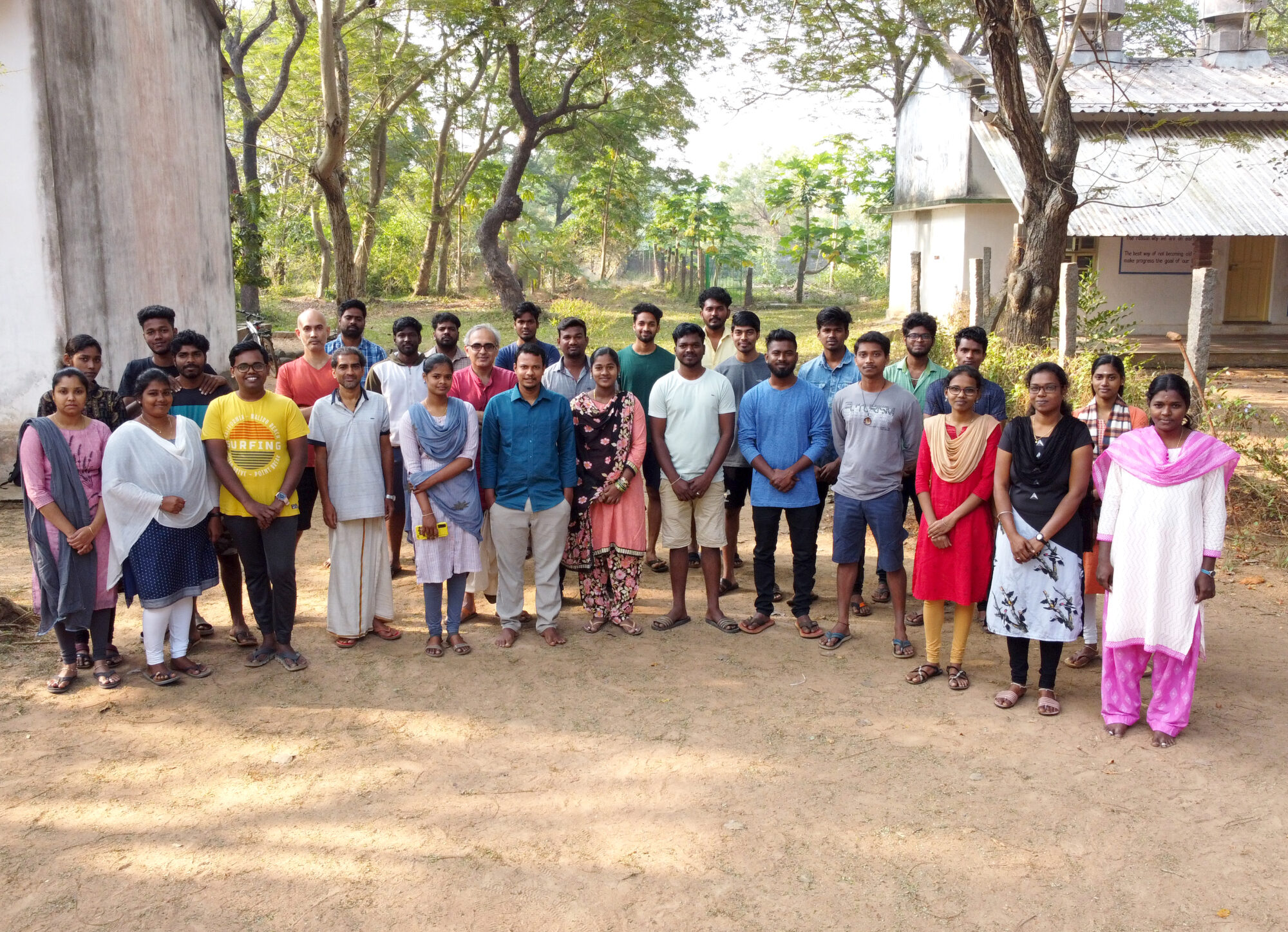Oct 2015
STEM Land is a learning and resource center at two of Auroville outreach schools – Udavi School and Isai Ambalam School. Here is a three fold brochure of STEM Land for more details.
Constructivist Education Theory (Bruner, 1960) indicates that knowledge is not delivered into the learner (whether child or adult) but recreated by the learner on his or her own. Children actively construct their knowledge by connecting new knowledge to what they already know. Constructivist education encourages discovery learning and learning by doing. It encourages activities that challenge a child’s worldview since conceptual change and deeper conceptual learning come from experiential and interactive activities.
STEM Land is in line with the theory of The Constructionism (Papert & Hare, 1991) that adds to the constructivist theory the belief that children construct their own knowledge best by creating something outside their minds that is often sharable.
We find these progressive thoughts in line with a broader philosophy of Sri. Aurobindo (Sri. Aurobindo, 1910) who indicates that nothing can be taught, but the teacher can support and encourage a child in the process of learning, thus guiding them towards perfection. That a mind should be consulted in its own growth and that learning happens from near to far.
Our previous work with children was on the use of programming to learning to think mathematically (Ranganathan, et. al., 2015) at STEM land we have looked more critically at supporting children taking responsibility of their own learning (Ranganthan, et. al., 2018)
We hope to make learning Math and Science more meaningful through Making, Tinkering and Engineering (Martinez & Stager, 2012). Making taps into the innate nature of human beings to create and its active role in learning requires visualization of a ‘product’. Tinkering is a mindset – a playful approach to solving problems through experience, experimentation and discovery. Engineering is the process of extracting the principles from experience and organizing it to bridge intuition to formal learning, enabling better understanding and prediction of results.
We also hope to create a maker space that adults can also access to build things. The resource center of STEM Land had a variety of materials, TLM, etc that let us learn concepts that were not understood well enough when context presents itself. We are of course open to partnership with other like minded organizations and schools who want to find ways to use the material in their spaces.
We also have a large library of puzzles that are available to children and adults to checkout and strategy games for children to increase concentration and presence.
Here is a link of the original concept note when STEM land was started.
STEM Land is open from 10:45 a.m. to 2:00 p.m. on all days. If you prefer to see a schedule it is shown below. STEM Land is big enough to accommodate a class even if there is already one using it.
If the table doesn’t show Click here.
References
Papert, S. & Harel, I. (1991) Constructionism. Ablex Publishing Corporation.
Aurobindo, S. (1910) The Human Mind, Karmayogin.
J.S. Bruner (1960), The Process of Education, Harvard University Press
Martinez, S.L., & Gary, S. (2012). Invent to Learn: Making, Tinkering, and Engineering in the Classroom, Constructing Modern Knowledge Press.
Ranganathan S., Anand B., Kothandaraman S. and Gunasekar V. (Dec 2015) Using programming with rural children For Learning to think mathematically, epiSTEM 6 HBCSE.
Ranganathan S., Iyyanarappan A., Anand B., Kumar N., Patchaiyappan P., Ganesan P., Kodandaraman S., Gunasekar V. (Jan 2018), epiSTEME 7 HBCSE.


2 Replies to “STEM Land”